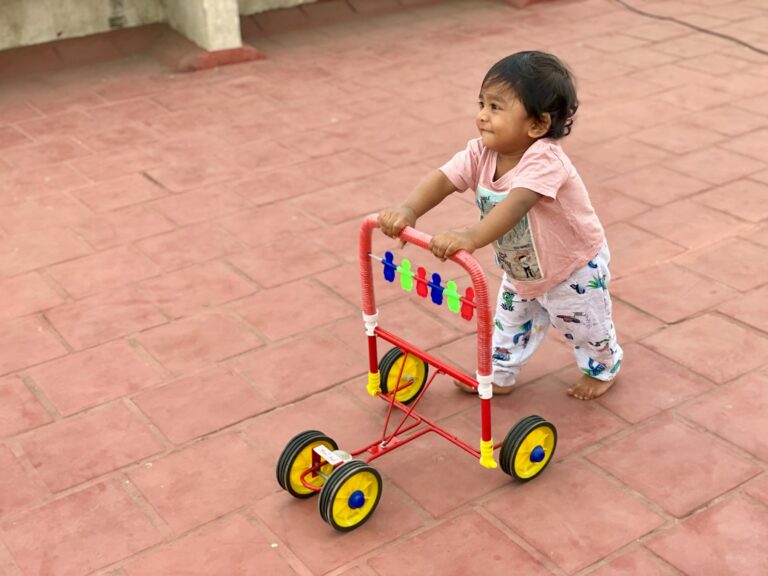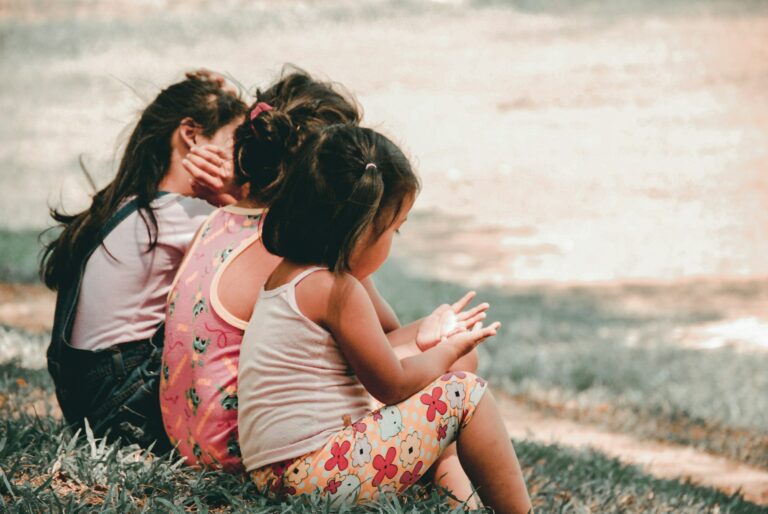Raising a highly sensitive child can be both a marvel and a puzzle, especially when their reactions turn small events into epic dramas or moments of pure delight. If every little detail, every sound, light, or word from a friend seems to spark an emotional whirlwind in your child, you might be wondering whether this is ordinary, or if your child is, in medical terms, a highly sensitive child. Wondering why minor disappointments bring tears, or why your child prefers a silent corner to the wild playground rush? The intensity can feel bewildering, sometimes even exhausting, yet there’s a world of strengths hidden behind these sensitivities. This exploration brings together scientific insight, practical advice, and evidence-based solutions for parents navigating the rich emotional universe of a highly sensitive child—from the science of brain and temperament, to concrete strategies for home, school, and social life. What defines high sensitivity in children? How does it differ from autism, ADHD, or anxiety? And most importantly, how can you support your child’s flourishing, while finding balance as a parent?
Understanding the Highly Sensitive Child
The highly sensitive child is not merely a child who feels “a bit too much.” From a clinical perspective, this is a temperament trait known as sensory processing sensitivity—a genetic and neurological foundation present in approximately 15–20% of children worldwide. The brain’s processing of sensory and emotional cues is heightened: loud noises feel louder, bright lights sharper, criticism heavier, but also, kindness and beauty strike deeper chords.
Does this intense sensitivity mean weakness? Absolutely not—there is no pathology here. Neurological studies have identified that the amygdala (the part of the brain processing emotions and fear) and related neural circuits fire more readily in these children. This explains why a highly sensitive child might be both extremely empathetic and quick to pull away from overwhelming settings. Family history matters too, with research finding heritable links for this temperament.
For parents, the question often arises: is sensitivity just a phase? Medical evidence clearly shows that the highly sensitive child’s brain is wired for deep emotional processing from birth. Environmental influences—supportive parenting, chronic stress, or trauma—can amplify or soothe how this sensitivity unfolds over time, but do not create it.
Recognizing the Signs of High Sensitivity
Spotting a highly sensitive child involves a puzzle of behavioral clues—distinct, yet sometimes overlapping with other pediatric conditions. Parents may observe:
- Deep empathy and emotional radar: Your child seems to absorb the moods of others, often reflecting feelings before a word is even spoken. There’s a responsiveness to subtle changes in environment or social tone.
- Exaggerated emotional responses: What looks like a mild setback (a dropped ice cream, a missed invitation) elicits outsized reactions—tears, withdrawal, or even anger.
- Sensory hyperawareness: Everyday experiences—a scratchy tag, traffic noise, crowded spaces, unfamiliar smells—become tests of endurance. Even the texture of socks may trigger discomfort.
- Proneness to fatigue and overload: After social gatherings or a busy day at school, the highly sensitive child may retreat, often craving silence and solitude to “reset.”
- Perfectionism and decision anxiety: Choices loom large, and any risk of disappointing others or making mistakes can provoke lengthy hesitation (or full shutdown).
- Sleep difficulties: The flood of thoughts and physical sensations continues long after bedtime, contributing to tossing, turning, and prolonged “wind down” routines.
- Struggle with transitions: New environments, shifting plans, or even meeting new people can cause distress, with calming routines or comfort objects providing essential relief.
Note: Sensitivity is distinct from introversion or shyness. An extroverted, highly sensitive child may thrive among peers, yet still fall prey to sensory chaos or emotional overload.
Highly Sensitive Child Versus Other Conditions
The overlap between high sensitivity and disorders like autism, ADHD, or clinical anxiety can confuse even seasoned parents. Here’s how medical evidence distinguishes the highly sensitive child:
- Autism spectrum: While both may show sensory sensitivities, autism typically entails persistent challenges in social communication, nonverbal cues, and repetitive behaviors—not the high social attunement and emotional nuance of the highly sensitive child.
- ADHD: Impulsivity, distractibility, and hyperactivity are key hallmarks—not present in high sensitivity. In the highly sensitive child, the world isn’t too boring; it’s too intense.
- Generalized anxiety: Although anxiety may co-occur, its focus is persistent worry and anticipation. High sensitivity, in contrast, centers on the depth and vividness of feeling and perception—often regardless of tangible risk.
If you’re uncertain, especially if sensitivities interfere with sleep, friendships, or learning, consulting a child psychologist or pediatrician can clarify the picture. Sometimes, features of different traits overlap, requiring careful assessment.
Why Are Some Children Highly Sensitive?
Biology—or more precisely, genetics—gets the credit. Studies on twins and families indicate that the highly sensitive child’s nervous system is “set” for enhanced responsiveness from the earliest days. Temperament isn’t shaped solely by upbringing, though supportive and understanding parenting can help children better harness their sensitivity.
Adverse environments—chronic criticism, family stress, trauma—can exacerbate sensitivity, amplifying emotional outbursts or withdrawal. Conversely, acceptance and calm routines help children learn resilience and promote positive brain development, even when sensitivity remains.
A reminder for every parent: The highly sensitive child is not “overreacting on purpose.” Their experience of the world is—literally—different.
Assessing and Identifying a Highly Sensitive Child
How to differentiate a sensory-rich temperament from typical childhood ups and downs? Start by documenting patterns: what environments, people, and situations provoke overwhelm? Notice if signs appear consistently in varied settings (home, school, playground).
Self-assessment tools—like Elaine N. Aron’s highly sensitive child questionnaire—offer parents structured questions for reflection. But teachers, caregivers, and doctors also provide key perspectives, as children sometimes hide sensitivities in public, or express them in “safe” environments.
If you observe withdrawal, persistent anxiety, sleep disruptions, or struggles with friendships, evaluation by a professional may uncover underlying concerns—be it high sensitivity, or something else requiring targeted support.
Everyday Life for Highly Sensitive Children
The daily rhythm of a highly sensitive child often dances to a different beat:
- At home: Background noise, sibling energy, unexpected visitors—all can be overwhelming, prompting the need for frequent breaks or the comfort of familiar routines and objects.
- In school: Imagine classrooms brimming with sound, visual clutter, transitions, and fluctuating peer energy. The highly sensitive child may struggle with group activities, classroom critiques, or noisy assemblies, sometimes becoming silent or withdrawn.
- Leisure and socialising: One-on-one or small-group play feels more manageable, while birthday parties, family functions, or outings may require careful preparation and planned “time-outs.”
Routine transitions—a trip to grandparents, sleepover, or new extracurricular activity—can seem monumental. Incremental exposure, plus the reassurance of predictability, often work best.
Common Challenges for the Highly Sensitive Child
The landscape can be rocky for a highly sensitive child, with specific hurdles emerging:
- Emotional overwhelm: Everyday frustrations, unpredictability, or negative feedback may feel like tidal waves, triggering tears, anger, or retreat.
- Sensory overload: Too much input—be it bright lights, spicy food, or scratchy clothing—can provoke irritability or shutdown.
- Indecisiveness: The pressure of choosing sparks anxiety, especially when the risk of hurting someone’s feelings exists.
- Social withdrawal: Seeking silence isn’t always shyness; it’s often self-preservation.
- Focus struggles: Distractibility, not from boredom, but from environmental saturation.
- Sleep interruptions: Emotional replay and sensory impressions linger, leading to difficult nights.
Watch out: What may look like being difficult or stubborn often signals a coping attempt in a world felt too keenly.
Parenting Strategies for a Highly Sensitive Child
Caring for a highly sensitive child draws on both science and intuition:
- Acknowledge emotions: Name what your child feels; let them know it’s okay to experience those feelings—even if they seem disproportionate from the outside. The physiological stress is real.
- Create space for expression: Invite conversation about emotions, using visuals or stories if needed. This builds emotional intelligence over time.
- Notice and anticipate signals of overwhelm: Step in with breaks or a change of scene before things escalate.
- Adapt the environment: Ensure quiet spots, maintain soothing routines, and ease transitions by letting your child carry favorite objects for comfort.
- Prepare, don’t surprise: Explain what to expect at new events—role-play or rehearse scenarios together.
- Teach emotional triage: Help children distinguish between major crises and minor annoyances, encouraging them to prioritize.
- Celebrate sensitivity: Shine a light on strengths—attention to detail, creativity, intuition, rich emotional vocabulary.
- Gentle discipline: Avoid punitive reactions; instead, model calm and offer reassurance after tough episodes.
- Promote independence: Encourage decision-making, resilience, and exploration—while always keeping a safety net in place.
Approaches drawn from gentle parenting and Montessori philosophy often fit perfectly, promoting warmth and validation without overprotection.
Supporting the Highly Sensitive Child in School, Social, and Family Life
Partnership with teachers is essential. Talk openly about your child’s needs; suggest changes like quieter spaces, consistent routines, and gentle feedback (which research shows improves classroom experience for highly sensitive children).
Socially, smaller gatherings and gradual introductions pave the way for enjoyable play. Rehearse social scripts, discuss upcoming group activities in advance, and allow breaks when overwhelm nears.
Family routines benefit from balance—dedicate space for both noisy play and quiet refuge. Siblings, too, can be included in conversations about sensitivity, fostering mutual understanding.
Building Confidence, Resilience, and Well-being
Creative outlets—drawing, music, storytelling—offer safe channels for the highly sensitive child to process the emotional intensity. Introduce mindfulness activities, deep breathing, or simple relaxation techniques to equip your child for stress. Model healthy coping skills—your calm response is a lesson in itself.
Remind your child that their vibrant way of sensing, feeling, and connecting is an asset—empathy and observation, for instance, remain highly valued both in childhood and adulthood.
When to Seek Professional Support
Some signs suggest moving beyond self-help—seek consultation if:
- Emotional struggles persistently disrupt everyday functioning.
- Withdrawals from friends or activities become severe.
- Unpredictable or explosive reactions become the norm.
- Sleep, eating, or school attendance suffers.
Child psychologists or paediatricians skilled in sensory and emotional development can tailor interventions, building coping strategies, resilience, and positive self-concepts.
Key Takeaways
- The highly sensitive child is shaped by temperament and genetics—this is not a disease or behavioural problem.
- Their capacity for deep feeling, empathy, and observation offers remarkable strengths, but also distinct challenges—especially with overstimulation.
- Environmental adaptations, gentle discipline, and open communication help a highly sensitive child transition from overwhelm to resilience.
- Medical evidence underscores the value of support: tailored parenting, collaboration with educators, and early professional input if challenges persist.
- Empowerment starts with understanding and acceptance. Resources, including the Heloa app, offer free paediatric health questionnaires and personalised advice for families seeking guidance along this journey.
Questions Parents Ask
How can I help my highly sensitive child feel more comfortable in social situations?
Feeling overwhelmed in crowded or noisy spaces is common for the highly sensitive child. Preparation can make a huge difference: discuss upcoming events step-by-step, set up a “quiet corner” at gatherings where your child can take a break, and value even small social achievements. There’s no problem if your child prefers to watch before joining or needs a pause when the environment gets intense. Encourage them to listen to their own feelings, reassuring them that needing space is perfectly valid.
Do highly sensitive children need a special parenting style?
No single parenting “formula” fits all. The focus should be on tuning in to your child’s sensitivities. Prioritise listening, validating their emotions, and offering a calm environment as much as possible. Maintaining a balanced daily rhythm with quiet times helps the highly sensitive child recharge. Patience, flexibility, and realistic expectations are vital—observe your child’s cues and trust your instincts as you guide them.
Will my child always be highly sensitive, or can this change over time?
It’s natural to wonder if your child’s sensitivity will diminish with age. Most highly sensitive children remain sensitive as adults, but learn to manage and adapt their reactions over time. Supportive surroundings help them develop coping strategies and confidence; with time, many turn this trait into a real force for empathy or creativity. With respect and encouragement, sensitivity can become a wellspring of strength.









